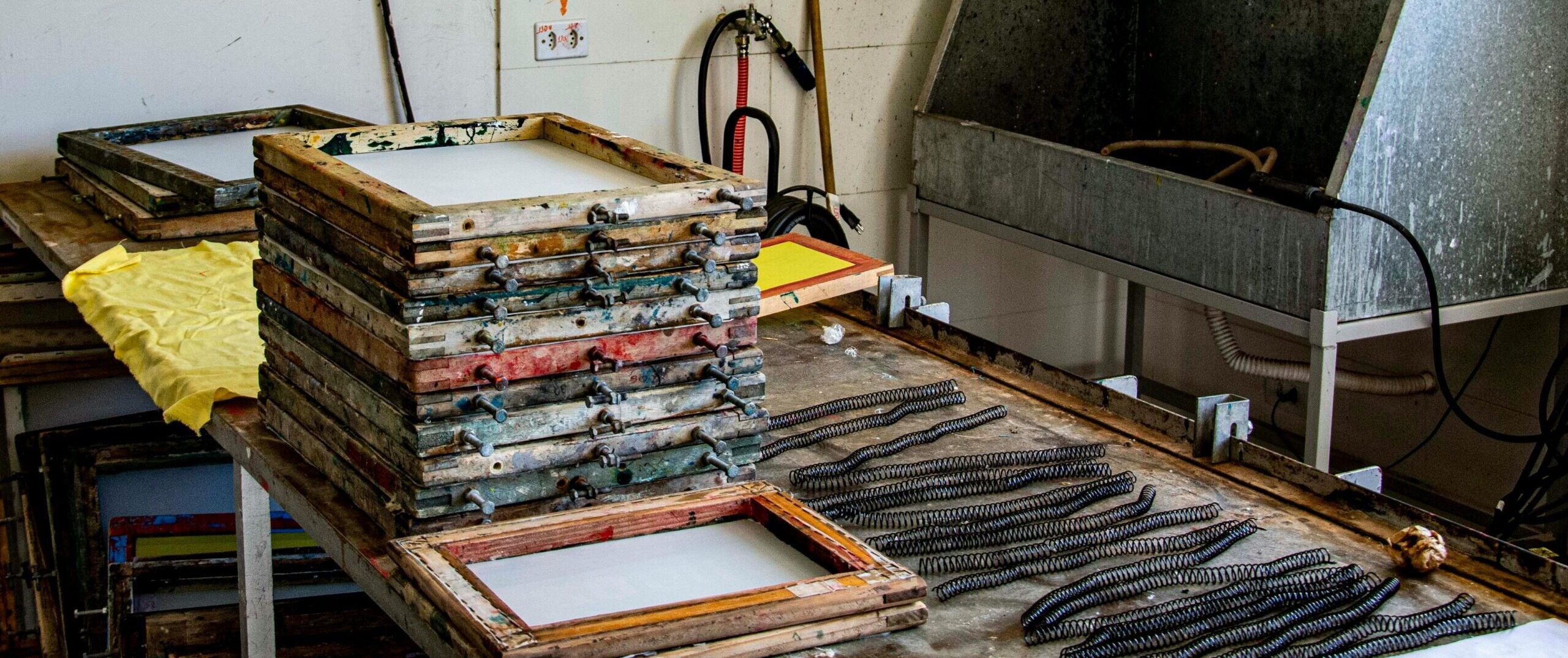Building Your Screen Printing Setup
Every great print starts with the right tools. Whether you’re building a small home setup or a full printing station, the materials you use will directly affect the quality of your results. This section is designed to help you understand what each tool does, how to use it, and where to find it.
All of the product links here come from trusted suppliers, so you can easily grab everything you need, from screens and emulsions to inks and heat sources, without guessing what works for beginners.
Understanding Your Materials
Screen printing is technical, but it’s not complicated once you know how the materials interact. For instance, the mesh count of your screen determines how much ink passes through, the emulsion controls stencil sharpness, and the ink typechanges how your print feels and ages.
Using the wrong combination can cause faded colors, smudges, or peeling, which is why this section exists. Each linked blog breaks down the science behind these materials in simple terms, so you can make informed choices instead of guessing.
Tools & Materials Blogs
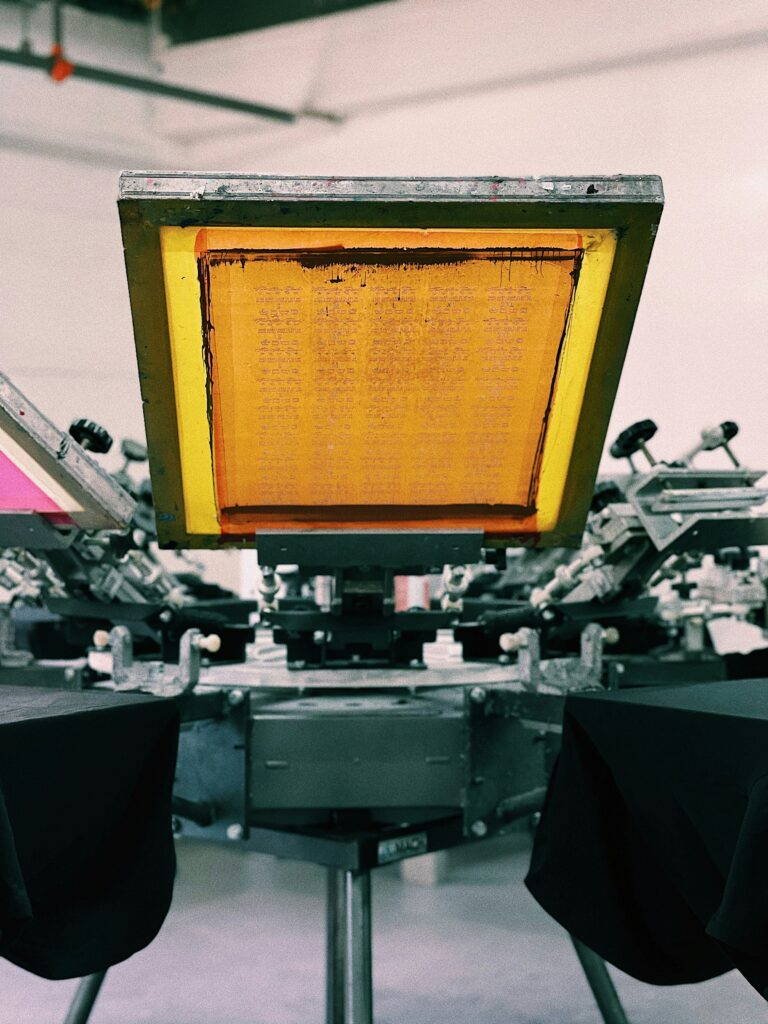
The 11 Essential Tools You Need
A complete beginner checklist that introduces every essential piece of equipment, from your first screen to your last squeegee
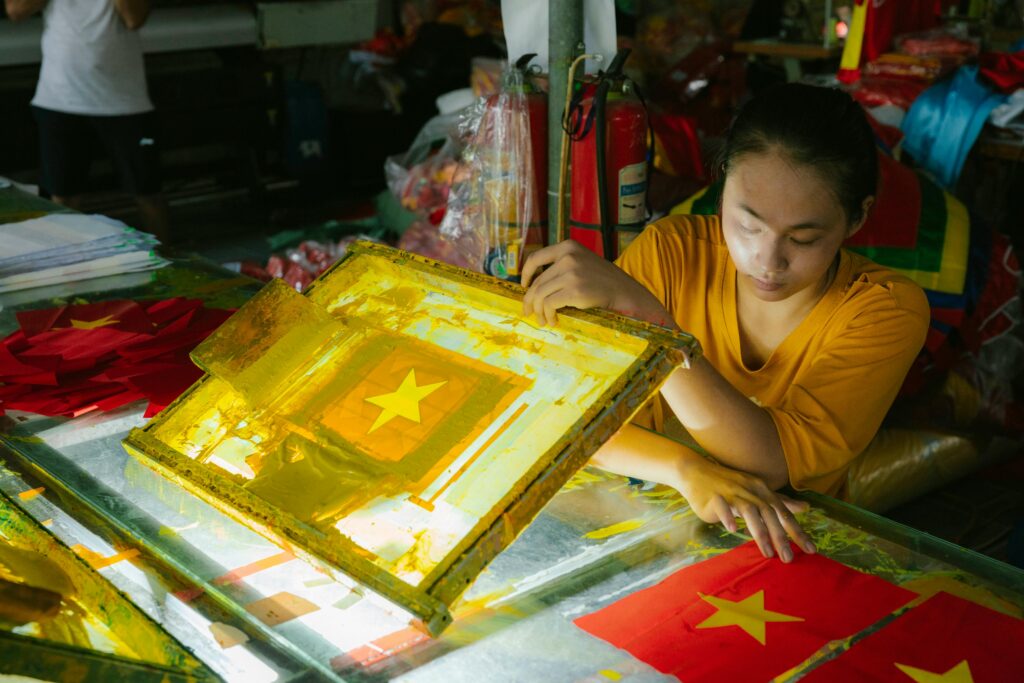
Choosing the Right Screen
Understand mesh counts, frame materials, and how each one affects your print detail.
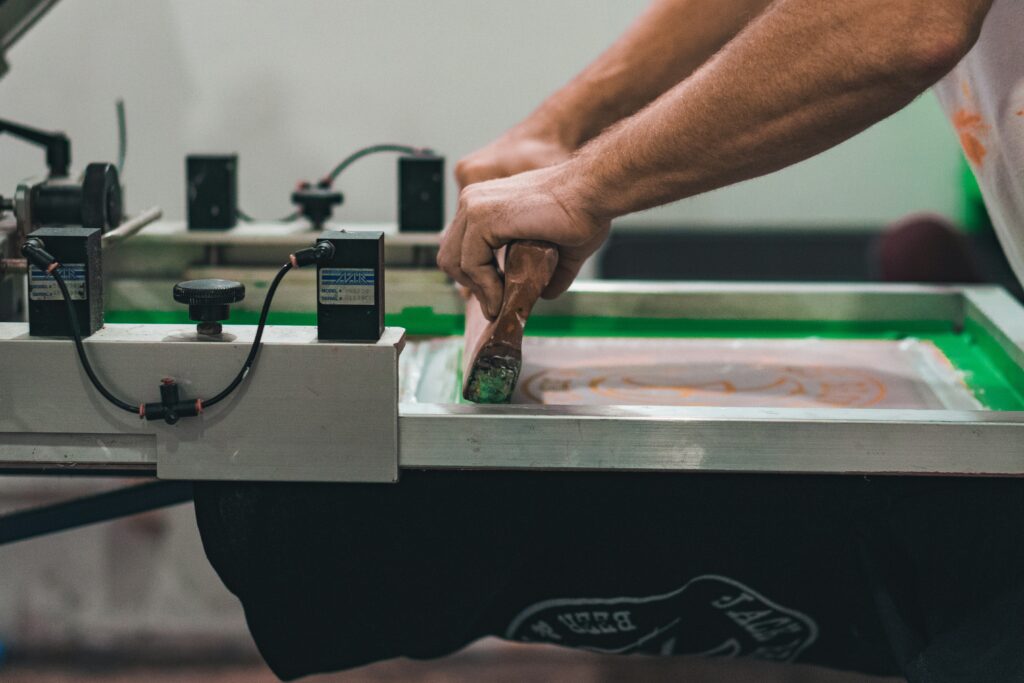
Curing The Ink
Explore all your options for curing ink, from simple irons to professional heat presses.
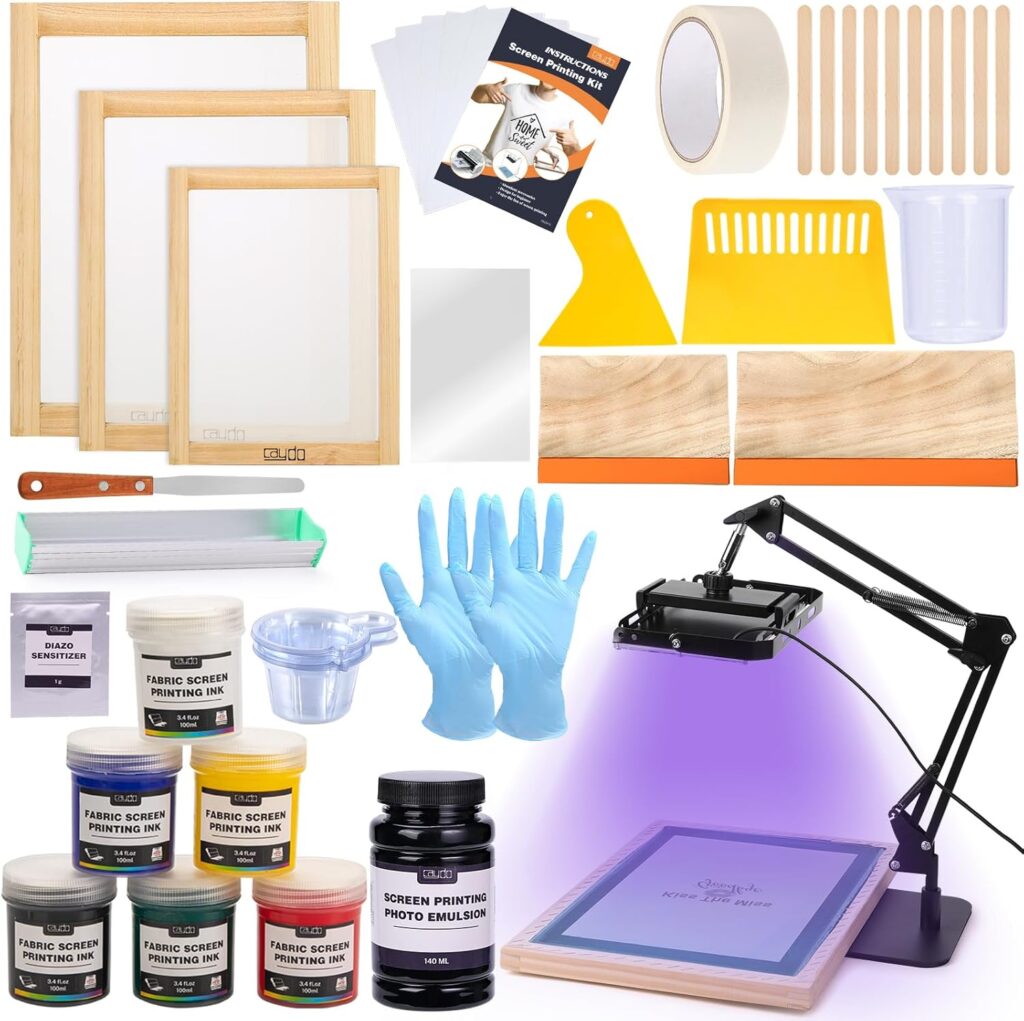
Screen Printing Starter Kits
A screen printing starter kit gives you everything you need in one box: screens, squeegee, inks, and emulsion, so you can start printing without the stress of gathering each item separately.
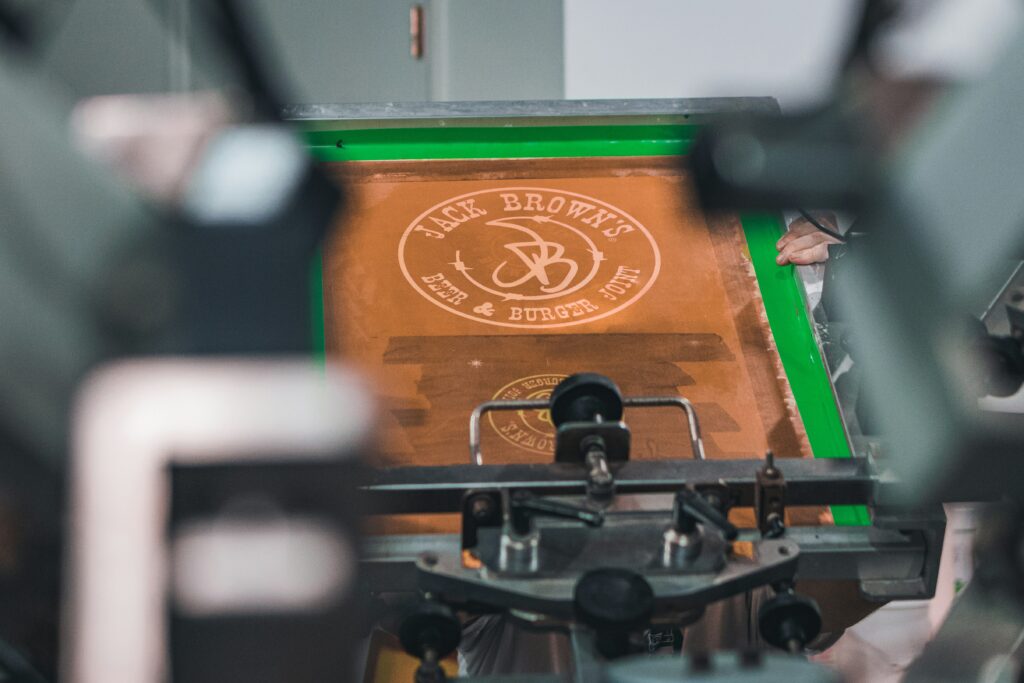
Emulsion and UV light
Learn how to choose the right emulsion type, dry it safely, and expose your design with even lighting
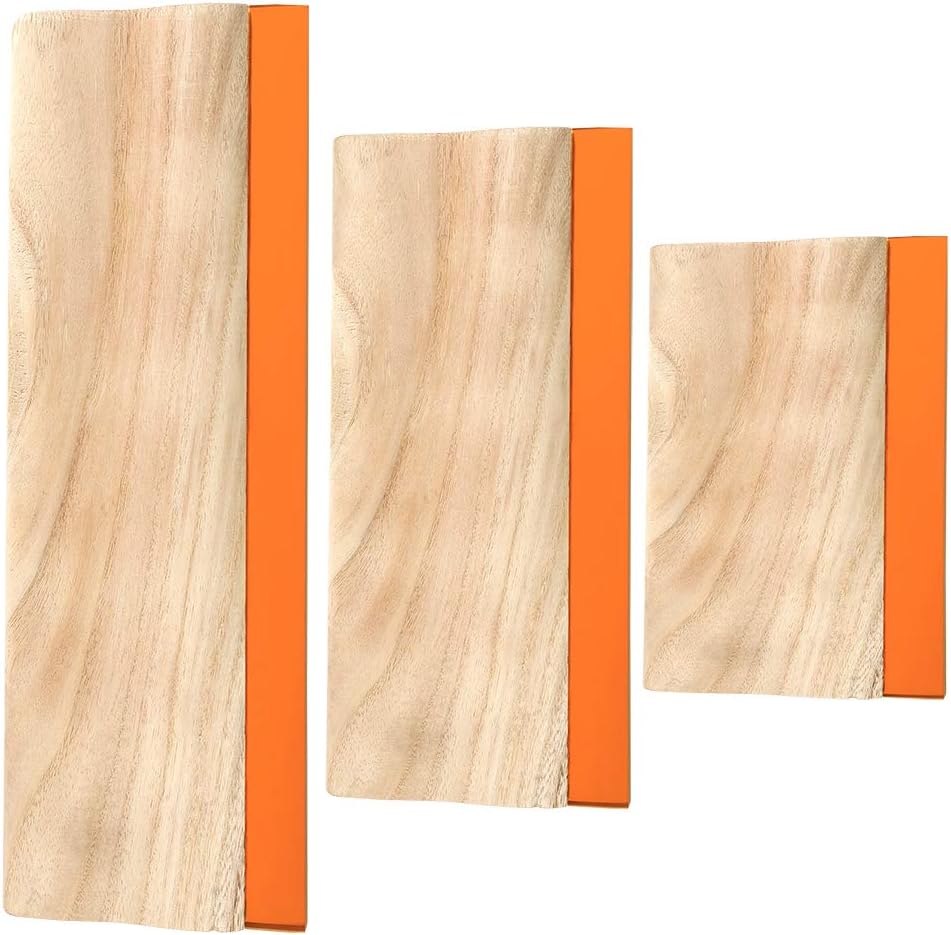
Other tools
Find useful extras like cleaning brushes, spatulas, adhesive sprays, and tape that make your workflow smoother.
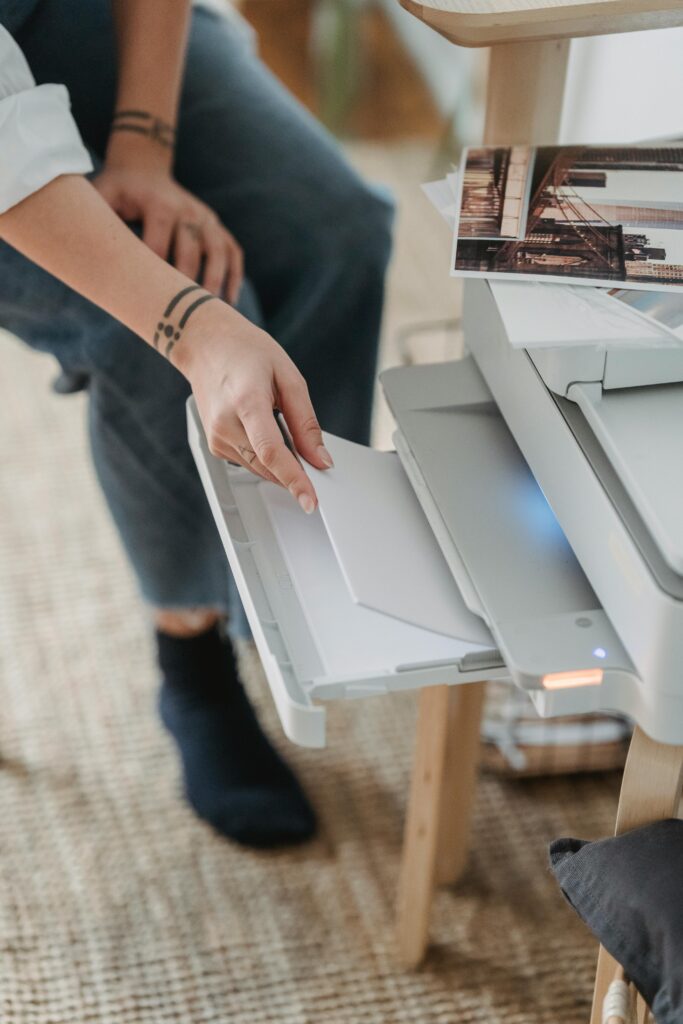
Printers and transparencies
Discover what kind of printers and films produce the cleanest artwork stencils for exposure.
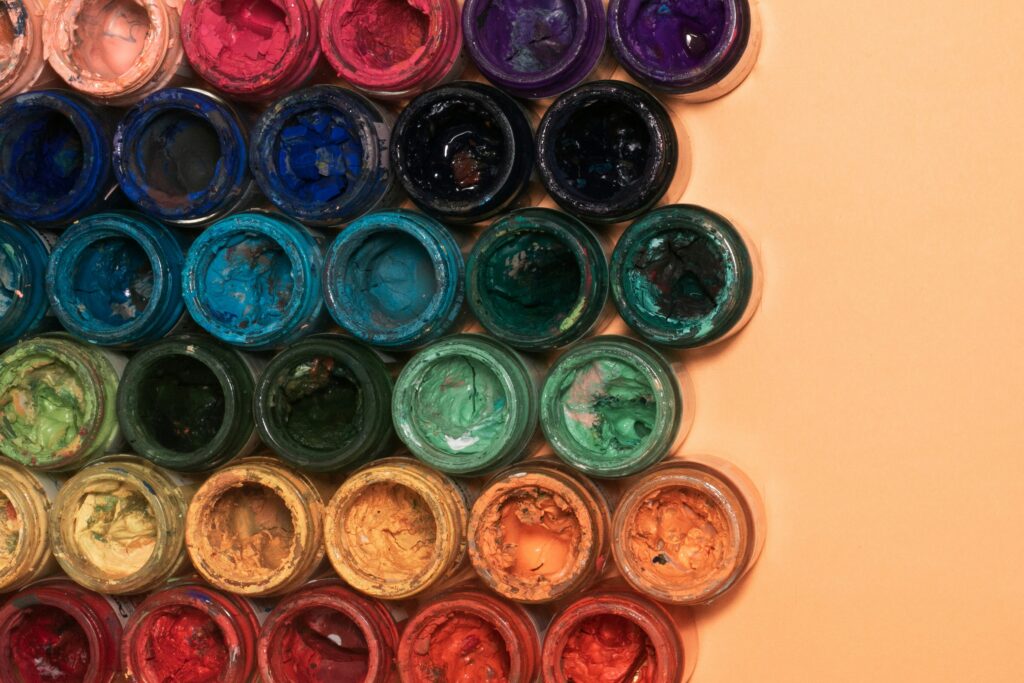
Water-Based vs. Plastisol Inks
Compare the two main types of screen printing inks, how they behave, and which is best for beginners.
These blogs also contain affiliate links to reliable beginner kits and professional-grade options.
That means you can buy exactly what you see in the tutorials, the same inks, emulsions, and lights used to get consistent, clean results.
Setting Up for Success
Before diving into the techniques, it’s smart to organize your workspace. Keep inks sealed, screens upright, and squeegees dry after cleaning. Dust, humidity, and light exposure can all affect your results, so building good habits from the start saves you time and materials later.
If you’re short on space, start small. A single screen, a basic UV lamp, and a few jars of ink are more than enough to learn the fundamentals. Once you’ve mastered the process, you can expand gradually with higher mesh counts, specialty inks, and more advanced curing equipment.
This page is your toolbox and your guide to building a setup that fits your space, your budget, and your goals.
Screen printing done correctly: short, practical blogs to get you printing today.

